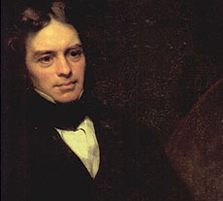
he
Faraday Institute for Science and Religion was launched in January 2006,
with the help of a grant from the Foundation, and has four main activities.
These are scholarly research and publication on science and religion,
provision of short-term courses in this field,

organization of seminars
and lectures, and providing accurate information on science and religion
for the international media and wider public.

This group of scholars is based at St. Edmund’s College, University of
Cambridge and derives its name from Michael Faraday, the eminent British
scientist who regarded his faith as integral to his scientific research.
The Faraday Institute has a Christian ethos, but encourages engagement
with a wide diversity of opinions concerning interactions between science
and religion without indulging in advocacy.

The Institute has initiated five research programs so far. The two most
recent are “What is Human? The Place of Humanity in the Biblical Traditions”
and “Scientific and Religious Aspects of Conflict Resolution.” The former
program aims to examine the biblical understanding of the divinely ordained
nature, status, and role of human beings as part of God’s creation. The
latter project explores the theory that renouncing confrontation distinguishes
successful human societies from those that have perished.

An additional grant, running from 2007 to 2009, has funded the program
“Promoting the Public Understanding of Science and Christianity in the
International Church Community.” Dr. Denis Alexander, director of the
Institute, says, “The aim is to seek to educate churches in the English-speaking
world in the whole area of science and religion.” This is being done
through the production of a documentary film, print materials for discussion
groups, and a book of short life stories from scientist-believers.

A program which Alexander regards as notably productive was a writers’
workshop held in September 2007, attended by 14 writers, mostly in the
history of science, who were invited to Cambridge for a two-and-a-half-day
meeting that has resulted in a multi-authored book. “The idea of the
book is to show how biology in particular has been utilized from 1600
to the present day for all kinds of non-biological goals, which might
be social, religious, political, and so forth.”

With the working title,
Ideology
and Biology—From Descartes to Dawkins,
the book will cover topics such as racism, eugenics, Marxist science
in the 1920s and 1930s, and ideas of evolutionary progress. “We’re trying
to bring it right up to date, to show that this utilization of biology
for non-biological ends is an ongoing process, it happens in every generation,
and so Alister McGrath’s final chapter is about the way that Dawkins
and others of the class of ‘new atheists,’ as they are called, are trying
to utilize evolutionary biology by attaching the ideology of atheism
to it.”

The Institute has also produced a publication on the environment and
global warming, and Alexander’s own book came out this summer entitled,
Creation or Evolution—Do We Have to Choose? Its theme reflects that of
the program, “Promoting the Public Understanding of Science and Christianity,”
trying to educate the churches about Darwinism and to persuade them that
it does not represent something that Christians should fear.

The Institute also runs a full program of lectures on such varying topics
as environmental issues, neuroscience, science and the Bible, historical
perspectives, and contemporary challenges, as well as science and religion.
The highlight this summer is “Simplicity and Complexity: Science, God
and Dawkins,” a public discussion between two well-known philosophers,
Professor Richard Swinburne, University of Oxford and Professor Colin
Howson, London School of Economics.

“I think the big question we want to address is what kind of positive
traffic is there between the ideas of science and faith?” says Alexander.
“Sometimes when you have traffic you have collisions, so the assumption
is not that there won’t be any collisions but that, on the whole, the
flow of traffic will be positive and synergistic.”

He sees many such positive developments in recent times. “I think what
has happened over the past 10 or 20 years is that one has this growing,
positive stream, mainly within academia, which is associated with the
founding of institutes, chairs in universities, lots of conferences and
books—a hugely positive and fruitful dialogue between science and religion.
We look forward to the time when the public domain discussion catches
up with the academy.”



 he
Faraday Institute for Science and Religion was launched in January 2006,
with the help of a grant from the Foundation, and has four main activities.
These are scholarly research and publication on science and religion,
provision of short-term courses in this field,
he
Faraday Institute for Science and Religion was launched in January 2006,
with the help of a grant from the Foundation, and has four main activities.
These are scholarly research and publication on science and religion,
provision of short-term courses in this field,  organization of seminars
and lectures, and providing accurate information on science and religion
for the international media and wider public.
organization of seminars
and lectures, and providing accurate information on science and religion
for the international media and wider public.